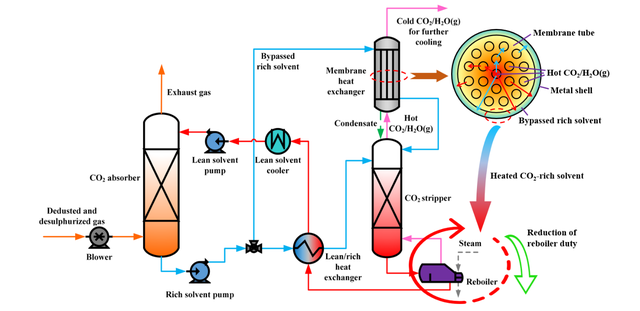Global climate change is one of the most pressing challenges facing the world today. With the increasing consensus among countries to reduce greenhouse gas emissions, carbon capture and storage (CCS) technology has become one of the key technologies for mitigating climate change. From theoretical research to industrial practice, carbon capture technology has made significant progress in recent years. This article will explore the latest developments in carbon capture technology and its application prospects in environmental protection.
Basic principles of carbon capture technology
Carbon capture technology mainly includes three steps: capturing carbon dioxide, transporting carbon dioxide, and sequestering carbon dioxide. Capture technology can be divided into various methods such as pre capture, post combustion capture, and oxygen combustion capture. Among them, post combustion capture is currently the most mature technology, which usually separates carbon dioxide from flue gas through methods such as chemical solvent absorption, adsorbent adsorption, or membrane separation.
Progress in Theoretical Research
In terms of theoretical research, scientists have been exploring more efficient and cost-effective carbon capture methods. For example, researchers have developed new types of absorbents that can capture more carbon dioxide with lower energy consumption. Meanwhile, the application of nanotechnology is also improving the performance of traditional adsorbents. In addition, breakthroughs have been made in membrane technology research, and new membrane materials can more effectively separate carbon dioxide.
The Development of Industrial Practice
In practice, multiple carbon capture and storage projects have been put into operation worldwide. For example, the Petra Nova project in the United States and the Boundary Dam project in Canada have both demonstrated the feasibility of industrial scale carbon capture. These projects not only demonstrate the role of carbon capture technology in reducing greenhouse gas emissions, but also provide valuable experience for the commercialization of carbon capture technology.
Technical Challenges and Solutions
Despite significant progress in carbon capture technology, there are still many challenges in its promotion and application. Firstly, there is the issue of cost. Currently, the cost of carbon capture technology is still relatively high. To address this issue, researchers are developing more economical capture materials and processes. Secondly, there is the issue of energy consumption. The energy consumption in the carbon capture process is relatively high, and researchers are trying to reduce it by optimizing the process flow. Finally, there is the issue of storage safety. Scientists are studying how to ensure the long-term safe storage of carbon dioxide underground to prevent leakage.
Policy and market promotion
Policies and markets are also driving the development of carbon capture technology. Many countries have implemented policies to encourage the research and application of carbon capture technologies, such as carbon emissions trading systems and carbon taxes. At the same time, with the increasing attention of enterprises to environmental responsibility, many large enterprises have also begun to invest in carbon capture projects to reduce their own carbon footprint.
Future prospects
Looking ahead to the future, with further technological maturity and cost reduction, carbon capture technology is expected to be applied in a wider range of fields. For example, carbon capture technology will play an important role in heavy industries such as cement and steel manufacturing. Meanwhile, with a deeper understanding of the impact of climate change, carbon capture technology may become an important component of international carbon reduction efforts.
epilogue
Carbon capture technology has made significant progress from theory to practice, providing important technical support for global efforts to reduce emissions. Although there are still cost and technological challenges at present, with further research and policy support, carbon capture technology is expected to play a greater role in the future and contribute to addressing global climate change.


















































Discussion about this post